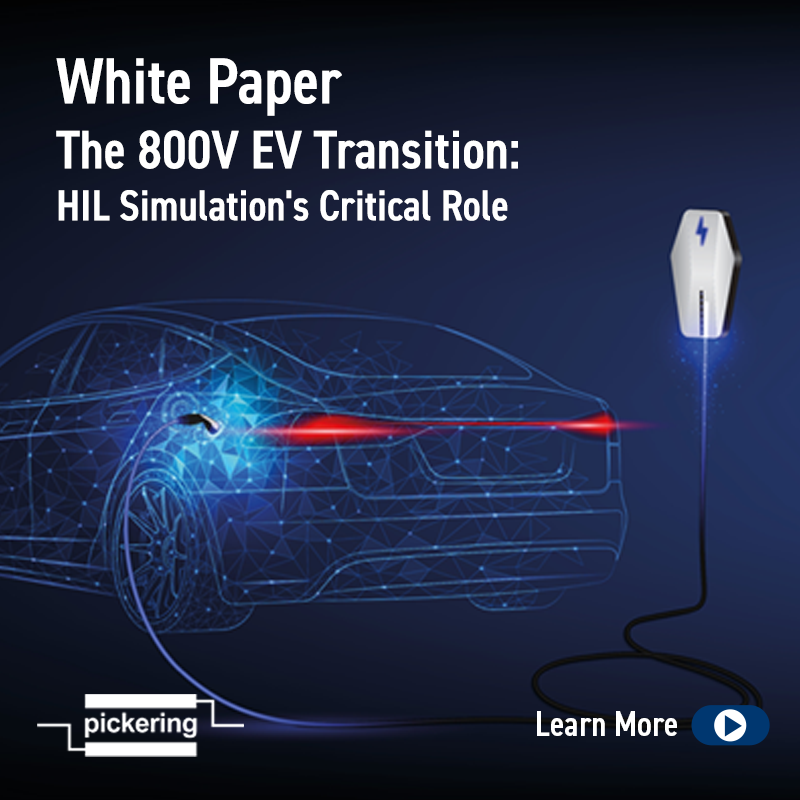
Sponsored by Pickering Interfaces.
In the rapidly evolving landscape of electric vehicles, the shift towards 800 V power system architectures is gaining serious momentum. This white paper, “HIL Simulation’s Crucial Role in the 800 V EV Transition,” explores the reasons behind the move to 800 V, the varied challenges this move presents to test professionals, and the pivotal role hardware-in-the-loop (HIL) simulation is playing in the transition from 400 V to 800 V architectures. In addition, we detail how to efficiently create a HIL test platform and outline a detailed migration path for testing 800 V architectures.
You will learn why 800 V EV architectures will mean increased complexity in battery management systems and require more durable components; the benefits in efficiency, range, and charging times promised by the shift to 800 V; how HIL simulation provides advantages in early issue identification, design improvements, and cost savings and the relevance of high voltage switching, RTD simulation, and fault insertion in EV development.



